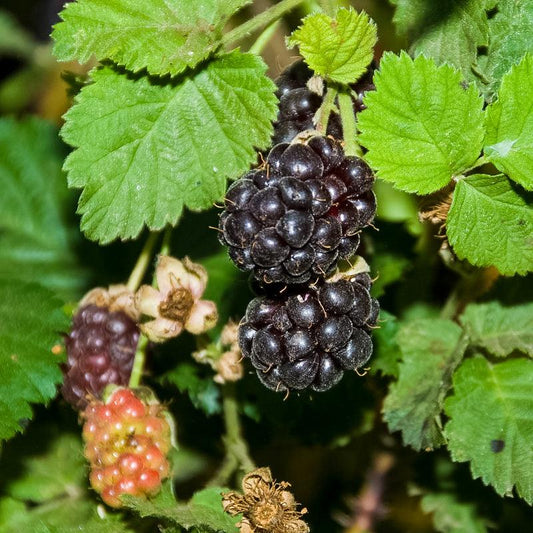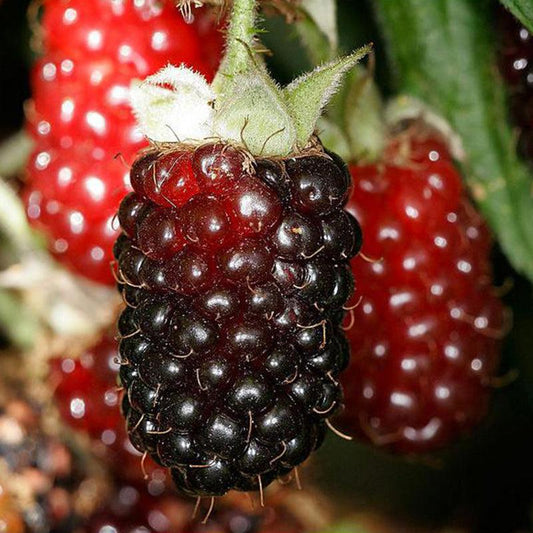Boysenberries, an enticing amalgamation of raspberries, blackberries, and loganberries, captivate both gardeners and berry aficionados with their enticingly tart-sweet flavor. Native to the United States, these berries have earned admiration for their versatility in culinary use and their ease of cultivation, making them a prized inclusion in home gardens and commercial berry farms alike.
Introduction to Boysenberries
Scientifically known as Rubus ursinus x idaeus, Boysenberries boast a unique fusion of sweetness and tanginess, melding the finest qualities of raspberries and blackberries. These trailing vines yield large, glossy, dark-purple berries, visually inviting and delightful on the palate.
Cultivation and Growth
Growing Boysenberries is relatively uncomplicated, demanding minimal effort for a fruitful harvest. These vines thrive in well-drained soil with a slightly acidic to neutral pH. Adequate sunlight, preferably full sun exposure, fosters robust growth and enhances fruit production. They flourish in USDA hardiness zones 5-9, adapting flexibly to diverse climatic conditions.
Planting Boysenberry Vines
Establishing Boysenberry vines involves setting up sturdy trellises or support structures to accommodate their trailing growth pattern. Preparing the soil with organic matter and ensuring appropriate spacing between vines promotes growth and facilitates airflow. When planting, secure the roots in the soil, guaranteeing sufficient coverage to encourage healthy development.
Watering and Maintenance
Consistent watering, especially during the growing season and fruit maturation, is pivotal for Boysenberry vines. Adequate moisture aids in establishing robust root systems and fostering fruit set. Applying mulch around the base of the vines retains moisture, curtails weed growth, and regulates soil temperature. Pruning the vines in late winter or early spring aids in managing growth, promoting fresh canes, and optimizing fruit production.
Harvesting Boysenberries
Boysenberries mature during the summer months, offering a delectable sweet-tart flavor upon ripening. Harvesting involves plucking the berries when they acquire a deep, rich color and effortlessly detach from the vine with a gentle tug. Fully ripe Boysenberries exhibit a firm texture with vivid hues, ideal for fresh consumption or for use in jams, pies, and diverse culinary concoctions.
Nutritional Value and Culinary Versatility
Loaded with antioxidants, vitamins, and fiber, Boysenberries contribute to a balanced diet and offer potential health perks. Their versatility makes them invaluable in various recipes, including smoothies, desserts, sauces, and baked goods. The berries' vibrant flavor profile enhances dishes, appealing to both home cooks and chefs alike.
Pests and Diseases
Boysenberries exhibit resilience against pests and diseases, but periodic management may be essential to ward off issues like aphids, spider mites, or fungal infections. Employing organic or integrated pest management methods maintains vine health without excessive reliance on chemicals.
Boysenberries, a delightful outcome of nature's hybridization, allure with their fusion of flavors, ease of cultivation, and culinary adaptability, making them a cherished inclusion in gardens and berry farms, carrying forward the legacy of Rudolph Boysen and the vision of Walter Knott.




